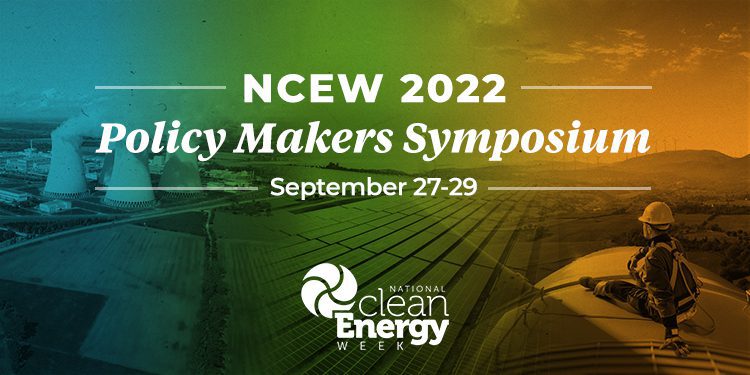NCEW’s daily theme “Unlocking American Resources” and the final panel of the week-long event “Workable Solutions for Nature” converge in a conversation focused on natural climate solutions.
Thursday marked the third and final day of National Clean Energy Week’s (NCEW) 6th Annual Policy Makers Symposium. The theme of the day – Unlocking American Resources – was a throughline during the extent of the day’s events. Kick-off remarks from policymakers on both sides of the aisle, including Sen. Kevin Cramer (R-ND), Sen. Bill Cassidy (R-LA), and Rep. Scott Peters (D-CA), showed that climate cooperation is alive and well in the halls of Congress.
The discussion, “Finding Workable Solutions for Nature,” also proved a broad collaboration among think tanks and other stakeholders on climate mitigation solutions. Participants in the final panel of NCEW included moderator Pasha Majdi, Senior Director at Conservation International, and the following panelists:
- Diana Movius, Senior Director at the Global Forest Policy Climate Advisers
- Lesley Jantarasami, Managing Director at the Energy Program Bipartisan Policy Center
- Christine Cadigan, Senior Director at the American Forest Foundation
As panelists were introduced it became immediately clear that one term was going to be used ubiquitously throughout the discussion. That term was natural climate solutions. “Natural climate solutions, in our view, is all about increasing the amount of carbon stored in nature – so in plants, trees, soils – and then also reducing greenhouse gas emissions,” shared Lesley Jantarasami, Managing Director at the Energy Program Bipartisan Policy Center at the outset of the panel. Her succinct definition set the table for a discussion that primarily revolved around the natural efforts we can deploy in the U.S. to help decarbonize the world.
While many of the symposium’s previous panels have covered a range of ways the U.S. can unlock and bolster more novel technologies like electric vehicles, nature-based solutions have been around for quite some time. From small acts like planting trees to large-scale land management practices, conservation and reforestation efforts are not necessarily new. What is relatively new is the utilization of these practices to decarbonize the environment at scale. Thankfully, there is a major opportunity for natural climate solutions on that front. “Research from the Nature Conservancy and some other groups have suggested that natural climate solutions have the potential to provide over a third of our needed climate mitigation globally within the next decade,” said Christine Cadigan, Senior Director at the American Forest Foundation.
Through reforestation, carbon sequestration improved land management practices, and halting large-scale deforestation, the U.S. can expand its already impressive natural climate decarbonization efforts. “Fourteen percent of annual U.S. emissions are stored in the land base, the natural resources we already have, so we see a ton of benefit that doesn’t always get appreciated in these conversations,” said Lesley Jantarasami.
In addition to the positive climate impacts of these practices, there are often overlooked beneficial externalities to further committing to relatively inexpensive and unobtrusive natural climate policies. By increasing investment in forest and land management, not only would the U.S. continue to stymie carbon emissions, but we’d also be able to boost biodiversity, resilience to wildfires and extreme weather, and crop productivity. These outcomes aren’t limited to narrow sets of communities either. A broad range of people, from rural farmers to coastal city-dwellers, agree that more efficient farmland, cleaner air, and an economy less reliant on foreign, nonrenewable energy benefits America.





